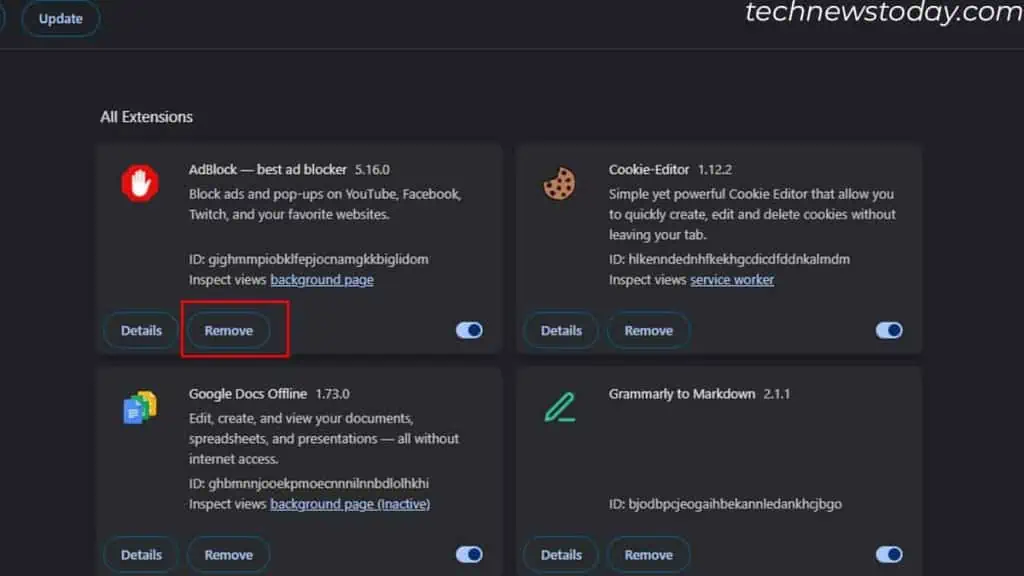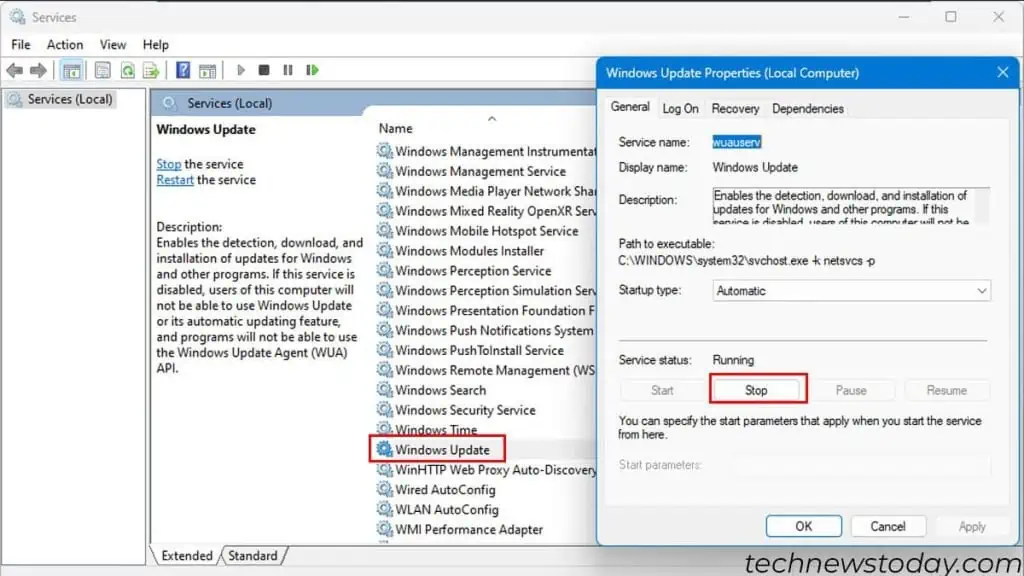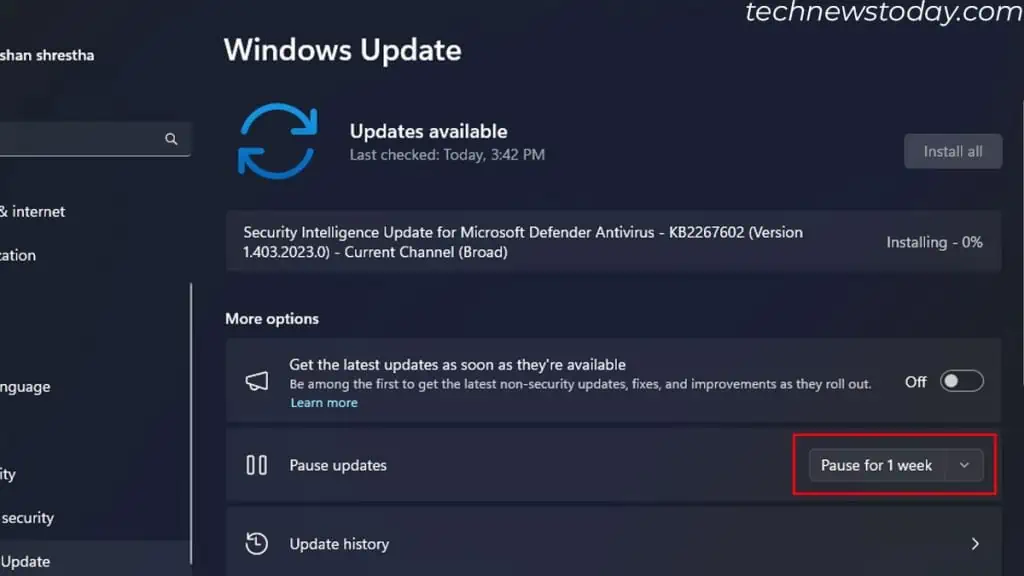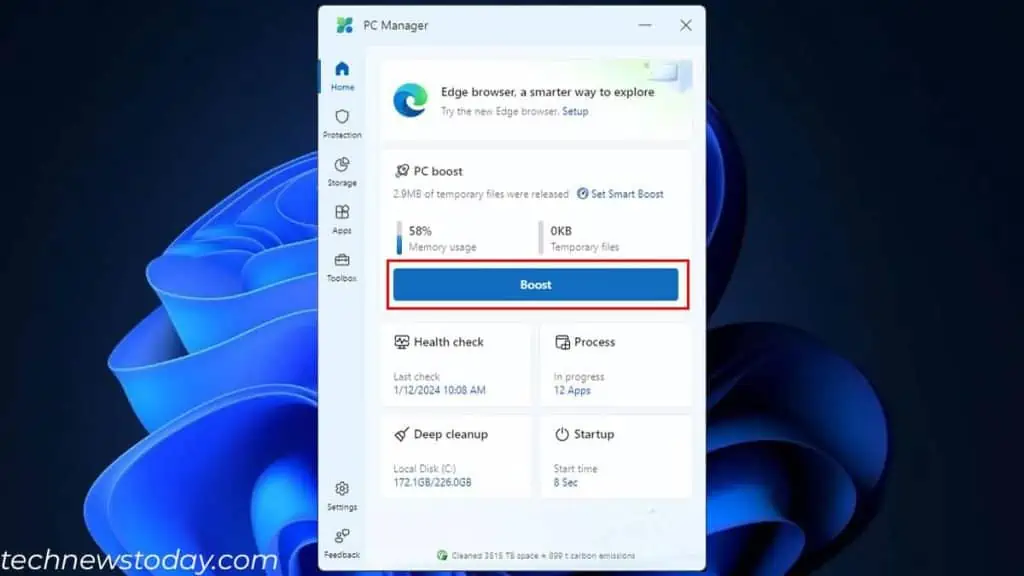Running numerous applications simultaneously increases your RAM usage. you may lower thisbyclosing unnecessary applicationsfrom the foreground and the background.
Applications, like your browsers, might also use more memory than required.Removing extensionsand usingbrowsers that use less RAMare some other options.
Also, note thatmemory usage increases during Windows updates. So, it’s best toschedule them.
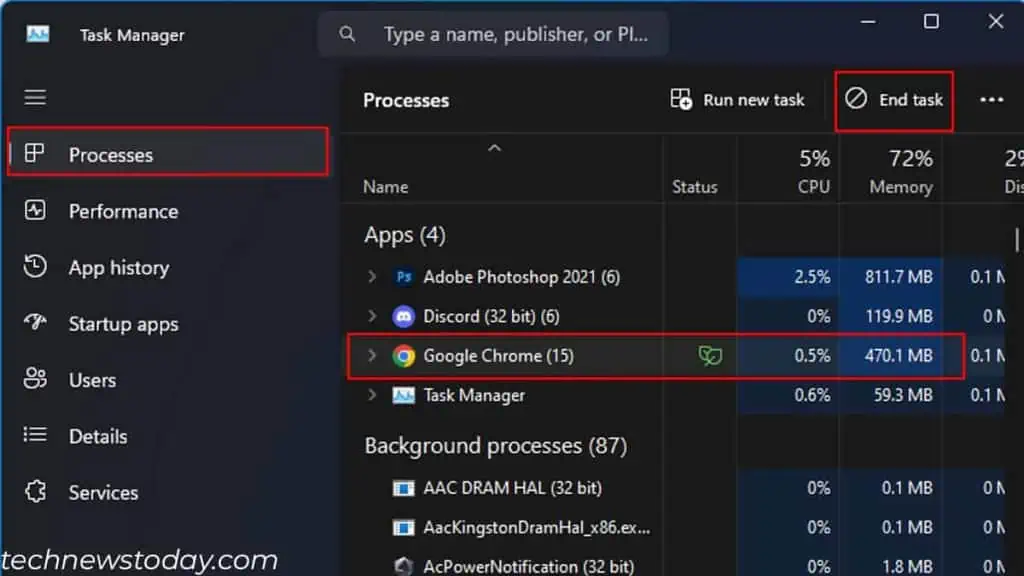
you may even enableSmart BoostinMicrosoft’s PC Manager. This automatically lowers RAM usage by clearing all temporary files.
Now, let’s dive into how you may lower RAM usage in greater detail.
Disable Background Applications
The first thing I recommend is ending unnecessary background applicationsfrom the Task Manager. This will completely close any application/process, or service, and free memory resources for the selected application.
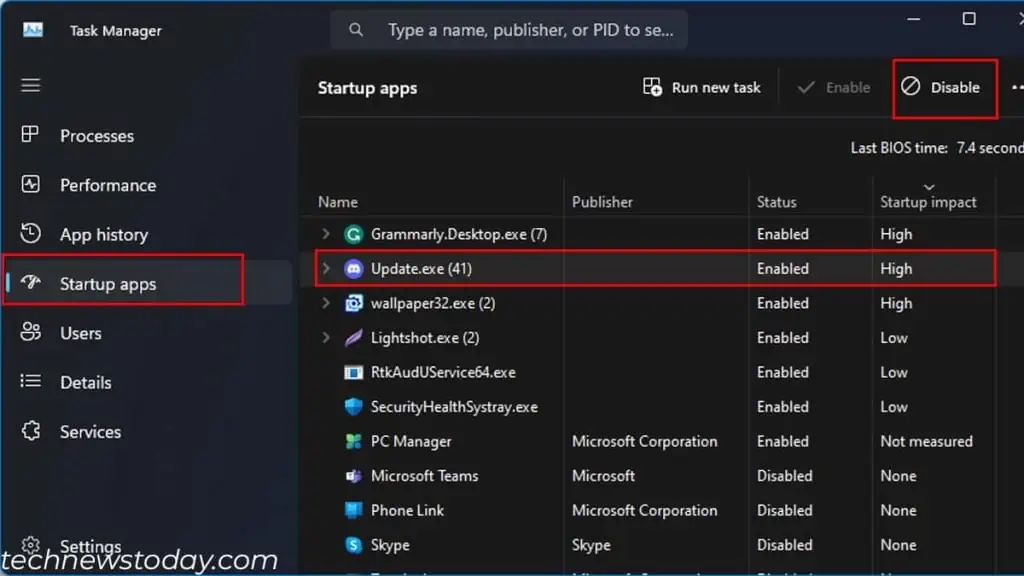
Additional Tip:When removing a task from the background,verify if any application is causing memory leaks. In such a case, you may follow our guide tofree memoryand re-install them immediately.
While you are here, I also advisedisabling all the unnecessary appsthat automatically run during startup and consume high memory.
Get to theStartup appstab and disable those with a ‘High‘ Startup impact.

Close Browser Extension
Browser extensions take up a significant amount of memory. These extensions take even more memory as you open more tabs. This means the system along with theweb browser lags and feels choppy.
So, if you want to lower RAM usage,remove any unnecessary extensions:
My Tip:Using a browser with aRAM limiterhelps you keep its RAM usage under a limit.
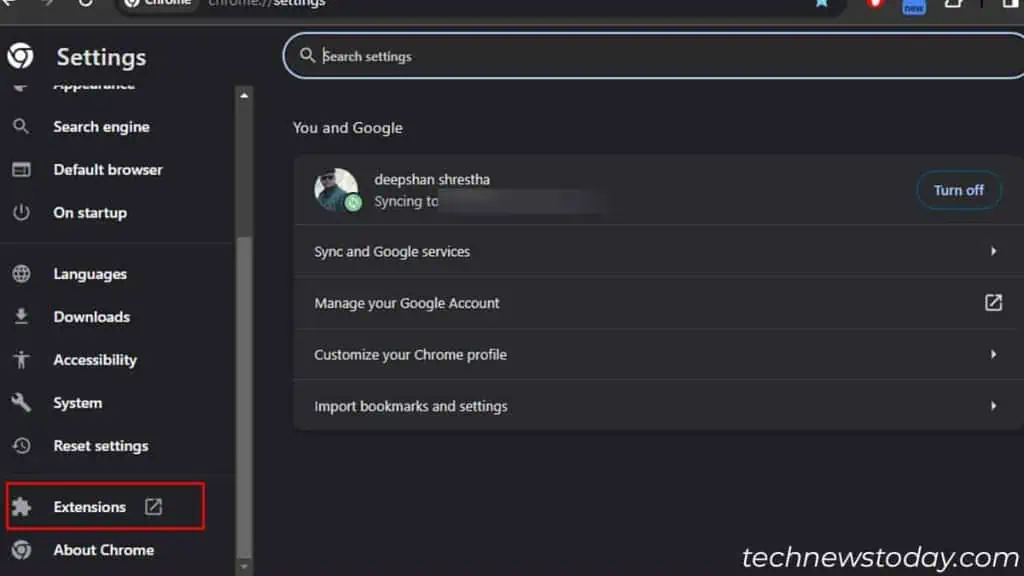
Pause Windows Update Temporarily
